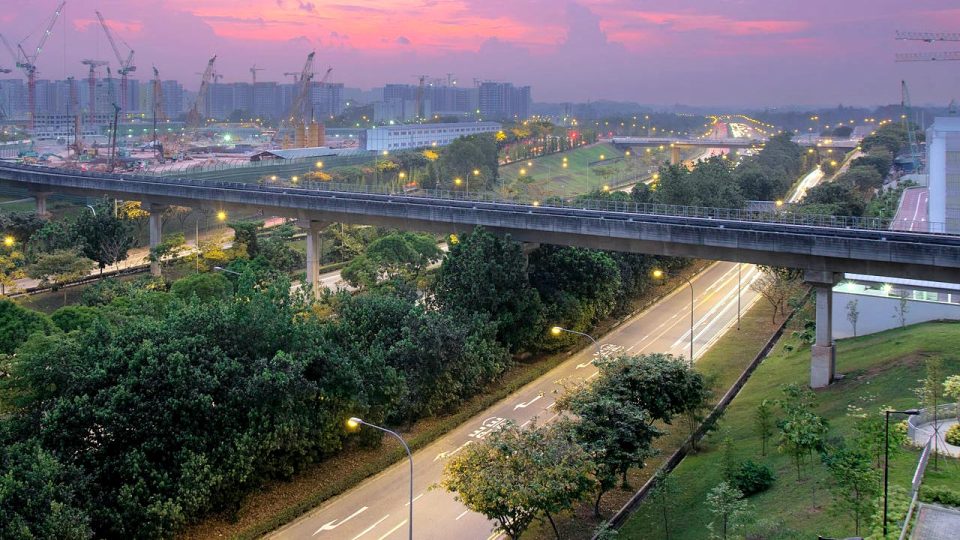As a garden city, trees are all around you in Singapore, and these gentle green giants provide some much-needed shade from the hot sun for runners.
In fact, Singapore has over 2 million trees that are planted in parks, protected natural areas, and along roadsides!
Learning about trees is a fantastic way to increase your love and understanding of nature and the environment. While running in Singapore, it’s good to observe the trees around us.
Anatomy of a Tree
There are an estimated three trillion trees in the world, covering about 30% of our planet’s surface, with over 60,000 different species of trees.
Do you know what constitutes a tree? There are different factors that make a tree a tree:
- Stem: Trees have one single woody stem as know as the trunk that is the main support of the plant’s structure.
- Size: A tree can only be considered a tree if it’s at least 15 feet high when fully mature.
- Diameter: The stem and truck need to have a full crown of foliage at the top with a minimum 3-inch diameter at 4.5 feet above ground.
- Perennial: Trees are present-year round.
- Roots: Tree roots are usually found in the top three feet of the soil. The roots also expand well beyond the dripline, frequently occupying an area two to four times the size of the tree crown.
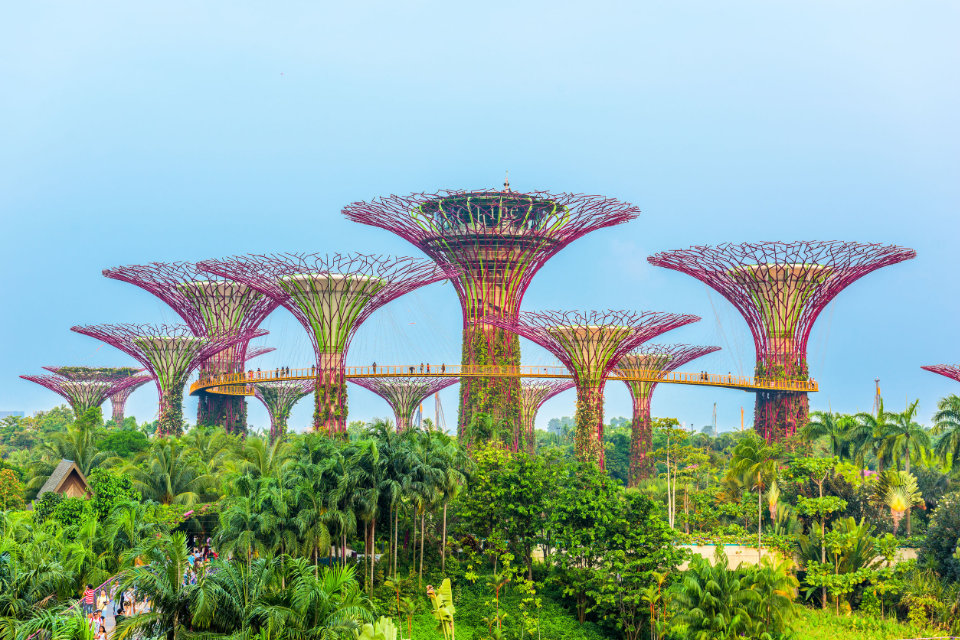
The Benefits of Trees in Singapore
There are many reasons why Singapore needs to plant and care for trees:
- Trees clean the air: Trees absorb pollutant gases and odors and filter particulars out of the air by trapping them on their leaves and bark.
- Trees provide oxygen: An acre of mature trees can provide enough oxygen for 18 people in Singapore for a year.
- Trees cool the city and the streets: Trees can cool Singapore by shading our homes and streets and releasing water vapor into the air through their leaves.
- Trees provide habitat for wildlife: Trees provide great urban homes for birds, bees, monkeys and squirrels.
- Trees provide food: Trees provide food for birds and wildlife as well as fruit for humans.
- Trees heal: Research has shown that patients heal faster when they have views of trees out their windows. Exposure to trees and nature reduce stress and mental fatigue. Children with ADHD show fewer symptoms when they have access to nature too.
- Trees help prevent soil erosion: Trees slow runoff and hold soil in place on hillsides.
- Trees combat climate change: Trees absorb carbon dioxide (CO2) and releasing oxygen. An acre of mature trees in a year can absorb the same amount of CO2 produced when you drive your car 41,000km.
- Trees shield us from ultraviolet rays: Trees reduce UV-B exposure by 50 percent, thus providing protection when we spend hours outdoors.
- Trees create job opportunities: Trees create green jobs such as green waste management and landscaping.
- Trees beautify things: Trees can block unsightly views, reduce glare, absorb wind and create an eye-soothing canopy of green.
What is the Heritage Tree Scheme?
Announced on 17 August 2001, the Heritage Tree Scheme advocates the conservation of Singapore’s mature trees.
A Heritage Trees Fund was started by The Hongkong and Shanghai Banking Corporation Limited to kick-start a conservation programme that safeguards and promotes appreciation of our natural heritage, which includes the installation of lightning conductors, interpretive signage and the setting up of a nomination scheme for the community.
Here’s a quick guide to 10 types of trees that you can see while you’re out on a run in Singapore!
Rain Tree (Samanea Saman)
The Rain Tree is a common sight in Singapore, and it’s a great place to rest under as its large branches stretch out in the shape of an umbrella, providing excellent shade.
There is an extremely large Rain Tree in the Singapore Botanic Gardens. The Rain Tree earns its nickname because its leaves fold just before rainy weather. It is also called “Pukul Lima” (“5 o’clock”) in Malay, as its leaves also fold in before sunset!
With a girth of 5m and stretching up to 32m in height, this particular specimen is classified as a protected Heritage Tree!
Fun Fact: Did you know that the Rain Tree is not a species native to Southeast Asia? It came originally from South America!
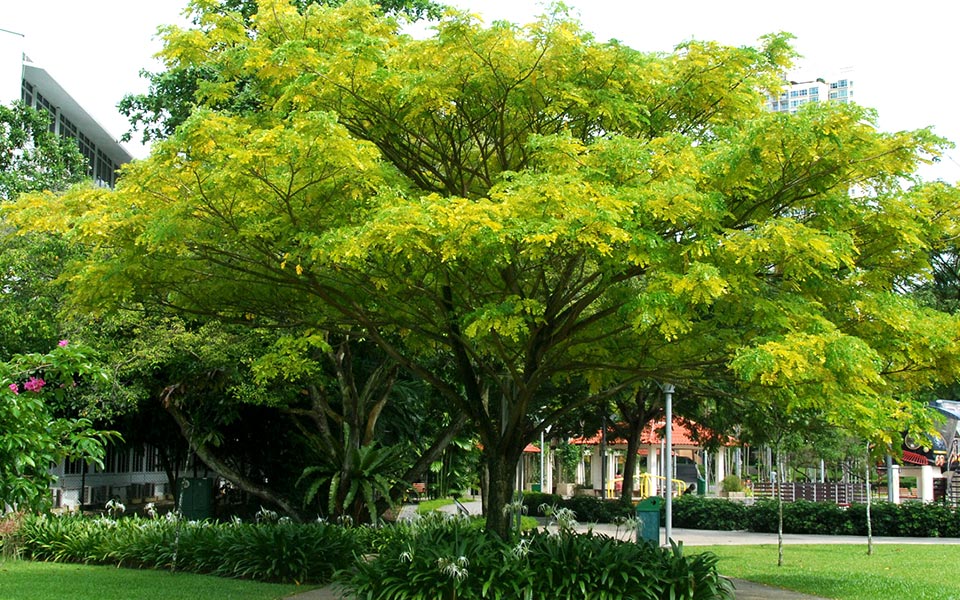
Angsana (Pterocarpus Indicus)
Angsana trees have beautiful fragrant yellow flowers that bloom only for 1 day, falling to the ground the next morning. Hardwood from the Angsana Tree is termite resistant, and surprisingly rose-scented!
Growing up to 40m high with a distinctively dome-shaped crown, there is a massive Angsana Heritage Tree located in Upper Serangoon Road and, at a girth of 7.7m, this particular specimen is amongst the largest roadside trees in Singapore!
Fun Fact: The Angsana Tree is the national tree of the Philippines!
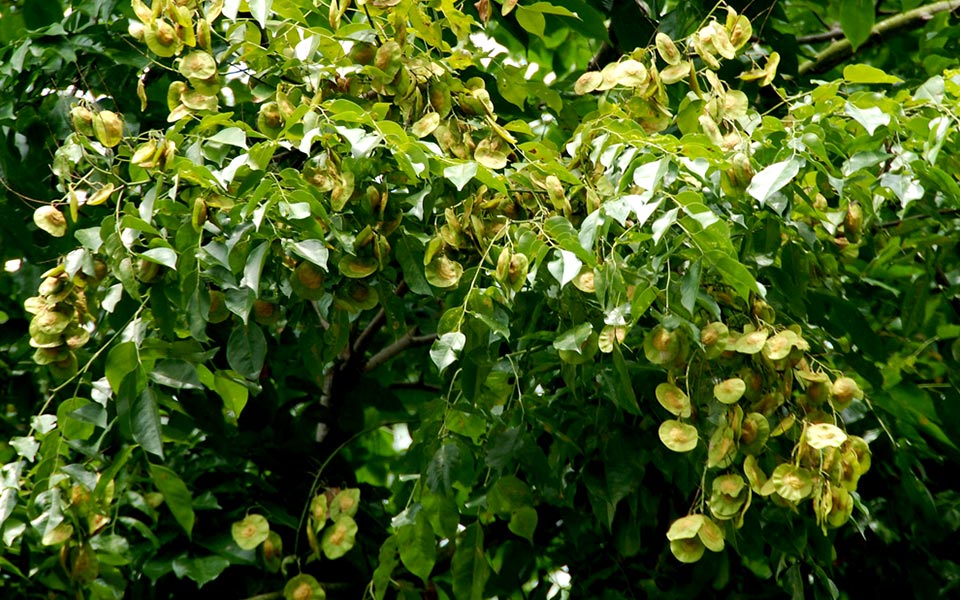
Yellow Flame (Peltophorum pterocarpum)
The Yellow Flame tree is native to Southeast Asia, and named because its fragrant, brilliant yellow blossoms cover the entire crown when in bloom. It is a popular ornamental tree planted all over the world.
Due to its ability to survive in hot and dry weather, the Yellow Flame Tree is well-adapted for Singapore’s sunny conditions.
Fun Fact: In India, the Yellow Flame is planted alternately with the Flame Tree for an eye-striking yellow and red effect in summer!

Senegal Mahogany (Khaya senegalensis)
As its name implies, the Senegal Mahogany is native to the African continent. In its first year, the seedling develops a deep root system that makes it a hardy, drought-resistant tree. When ripe, its fruits split open and release brown winged seeds that disperse in the wind.
Fun Fact: The Senegal Mahogany is closely related to the true Mahogany Trees and their timbers are similar in quality!
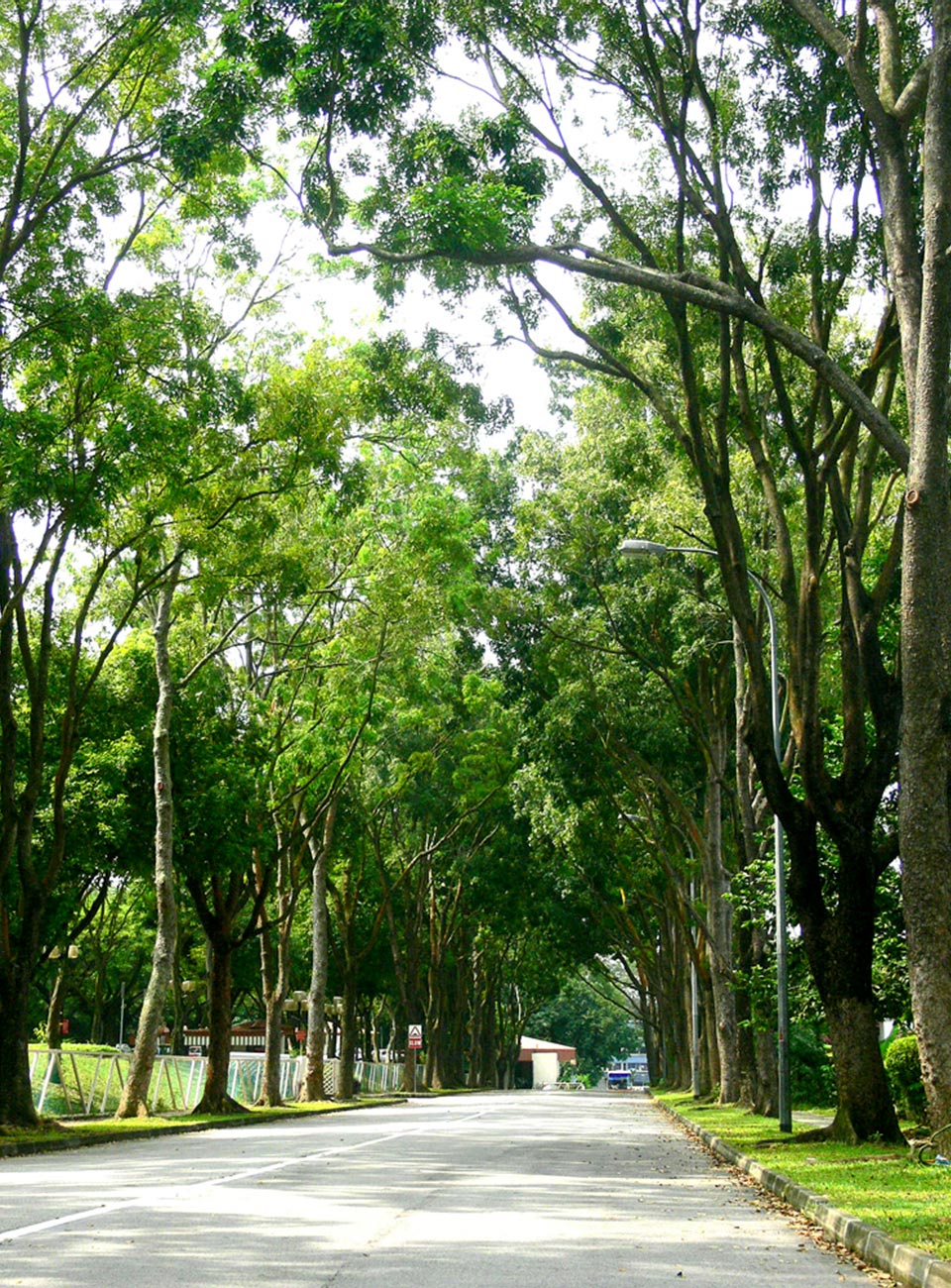
Broad-leafed Mahogany (Swietenia macrophylla)
A large tree that can grow up to 30m in height, timber from Broad-leafed Mahogany is regarded as among the best in the world. Its wood is used for making furniture and a wide variety of musical instruments.
In Singapore, the Broad-leafed Mahogany is planted on roadsides and used for its welcoming shade. The leaves of the tree are distinctively dark green in colour, becoming scarlet in colour as it withers.
Fun Fact: The Broad-leafed Mahogany is 1 of 3 species that yields genuine mahogany timber!
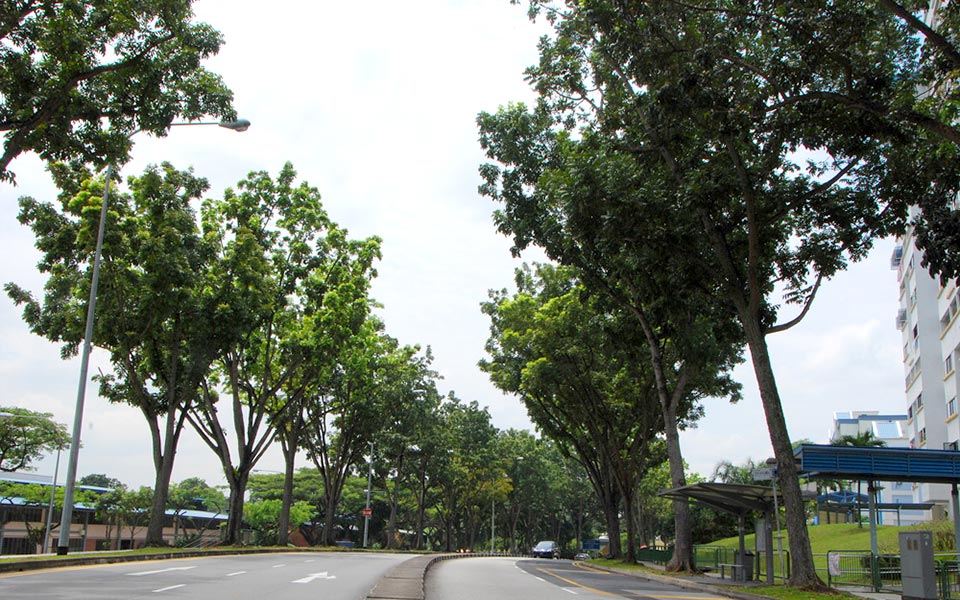
Tembusu (Fagraea fragrans)
The Tembusu is a tree that is native to Singapore. A large evergreen tree, the Tembusu can grow up to 40m tall. Its yellowish flowers have a distinctive fragrance and the fruits of the tree are bitter tasting red berries, which are commonly eaten by birds and fruit bats.
A recreation of the 200 year old Tembusu tree in the Singapore Botanic Gardens is also featured in Singapore’s SG$5 banknote!
Fun Fact: The extremely hard wood from the Tembusu Tree can last over 100 years and is used to make chopping boards. In fact, the wood is so hard that even termites and weevils avoid eating it!
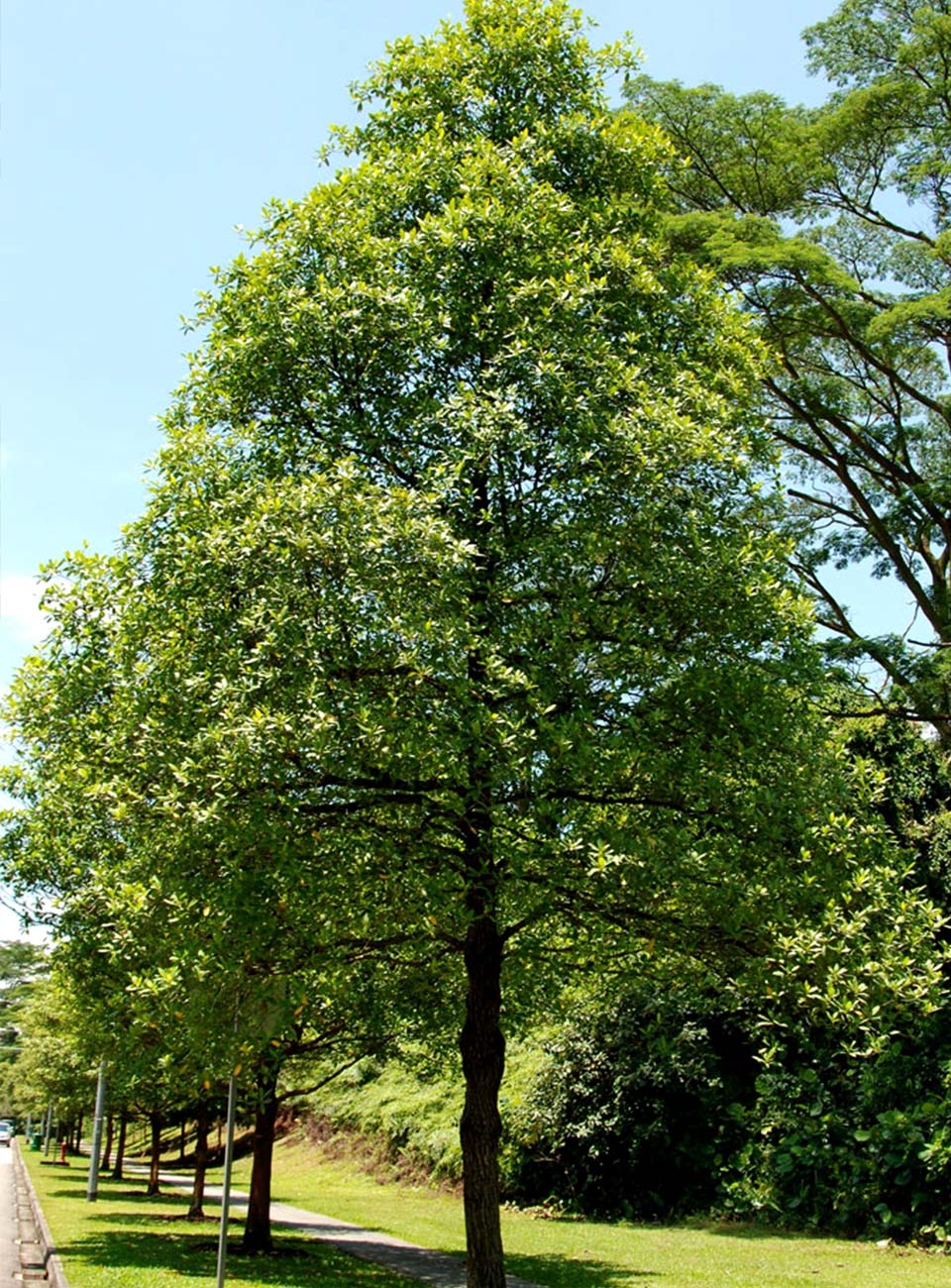
Sea Apple (Syzygium grande)
The Sea Apple is a coastal tree, and can often be found growing on sandy or rocky shores in the wild. Growing up to 30m in height, its flowers are distinctively “pom-pom like”! The fruits of the Sea Apple are eaten by bats, monkeys and birds, which then help to disperse the seeds.
Fun Fact: Surprisingly, the Sea Apple tree does not catch fire easily. Back when much of singapore was undeveloped and filled with lalang grass, the Sea Apple was planted widely across Singapore as a firebreaker!
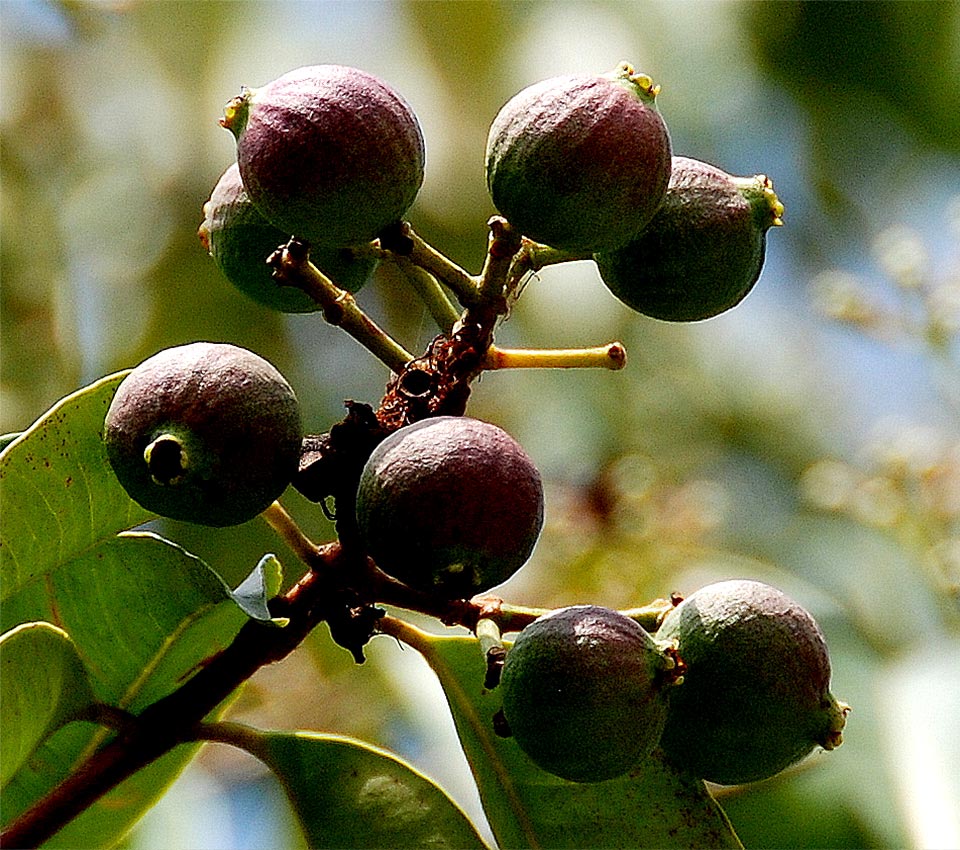
Saga (Adenanthera pavonina)
When you run near a Saga tree, you’ll definitely know it. The scarlet seeds are typically strewn all over the pavement, and children love collecting them! Fast-growing and requiring low maintenance, the Saga tree is a common sight in Singapore as it provides plenty of shade.
Fun Fact: Saga seeds are surprisingly uniform in weight, with 4 seeds weighing 1 gram. These were so accurate that the seeds have been used as units of weight for fine measures, such as gold!
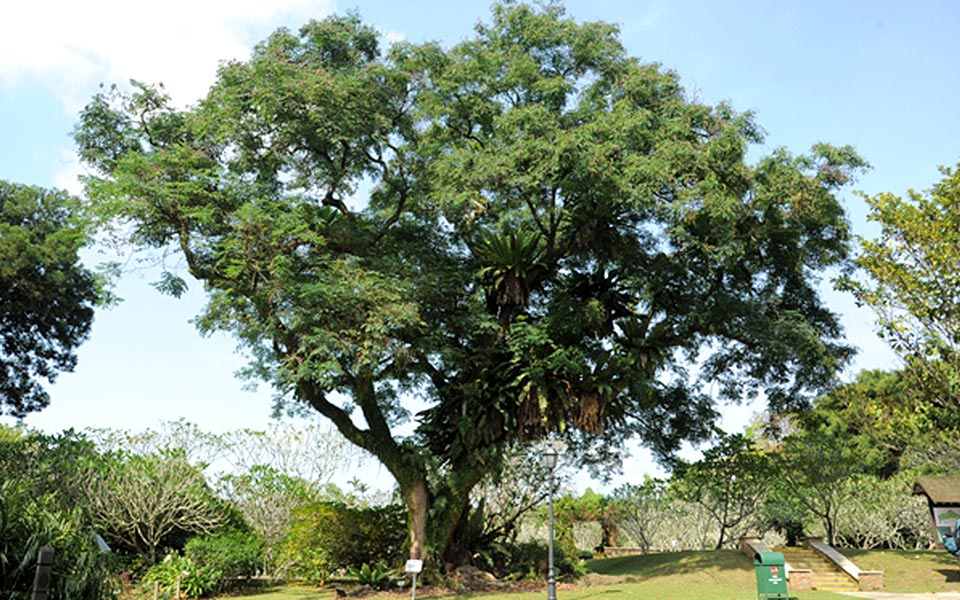
Trumpet Tree (Tabebuia rosea)
The Trumpet tree is known gets its name from the distinctive, trumpet-shaped flowers. It is a hardy tree that grows up to 18m to 25m tall. Its fruits are elongated pods, which split to disperse winged seeds that are carried away by the wind!
Fun Fact: The Trumpet tree tends to flower rapidly following rainfall after a long dry spell. The resulting bloom of the pink and white flowers covering the tree, causes it to look similar to Japan’s Cherry Blossom trees!
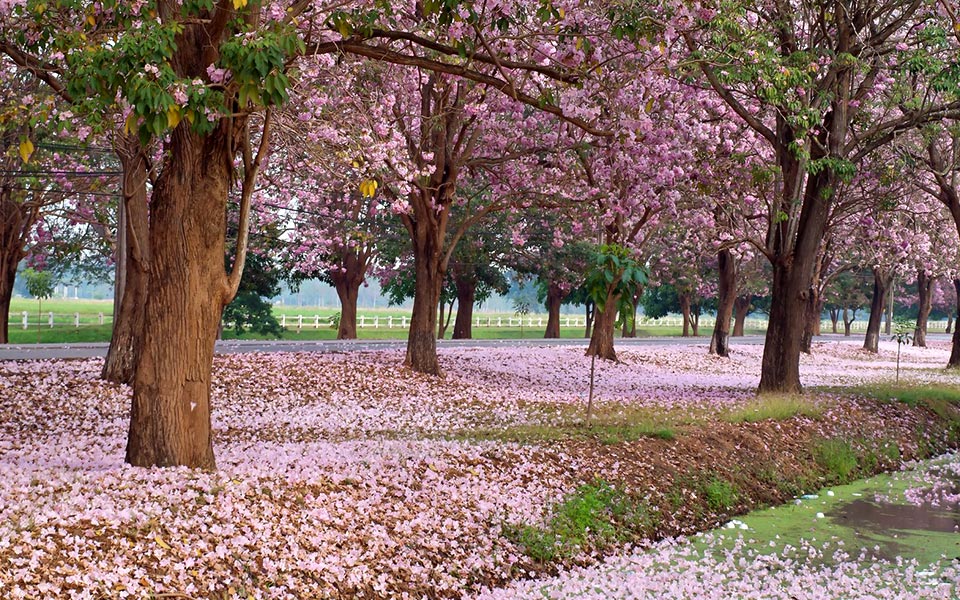
Sea Almond (Terminalia catappa)
The Sea Almond is a large tree that can grow up to 25m tall. It has a unique tiered branching pattern, forming a pagoda-shaped crown.
This tree has very large leaves that can grow to be up to 30cm broad and 14cm long, which turn from green to yellow, orange and finally red when they are about to shed.
Fun Fact: The leaves of the Sea Almond can actually lower the pH values and heavy metal content of water, and are commonly used by fish breeders to improve the health of their fish!
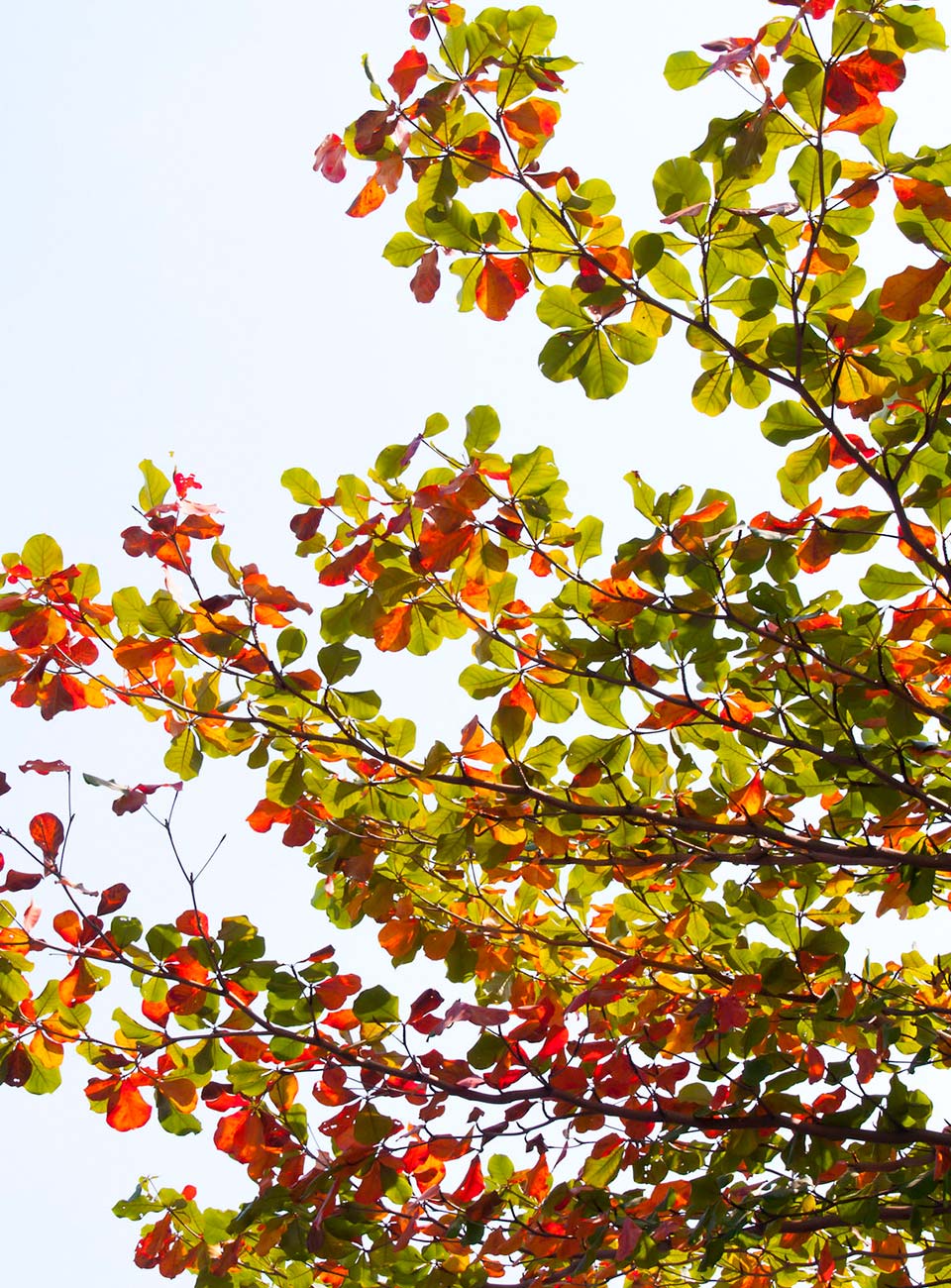
Trees serve to complement and balance Singapore’s urban environment. Not only acting as a welcome form of shade from the hot sun, they also often add colour and vibrancy to the landscape.
Without trees, the Singapore cityscape would be a severe landscape of concrete buildings instead!
What’s your favourite trees in Singapore? Share with us in the comments below.
More About Trees in Singapore
What are the trees in Singapore?
Here’s a quick guide to 10 types of trees that you can see while you’re out on a run in Singapore. They are Rain Tree, Angsana, Yellow Flame, Senegal Mahogany, Broad-leafed Mahogany, Tembusu, Sea Apple, Saga, Trumpet Tree and Sea Almond.
How many heritage trees are there in Singapore?
Starting from 2001, there are more than 200 trees accorded with heritage tree status. Some of the well-known Heritage Trees includes Purple Millettia, Temusu, Flame Of The Forest, Saga, Angsana, Tempinis, Kapok, Binjai and Rain Tree.
What constitutes a heritage tree in Singapore?
The Heritage Tree Panel can endorse a tree in Singapore as a Heritage Tree if a girth (trunk circumference) of more than five metres; and/or the tree is of botanical, social, historical, cultural and/or aesthetic values.
What is the importance of trees in Singapore?
There are many reasons why Singapore needs to plant and care for trees. The trees provide habitat for wildlife, combat climate change, create job opportunities, beatify things. They also provide us with oxygen and help prevent soil erosion and more.


